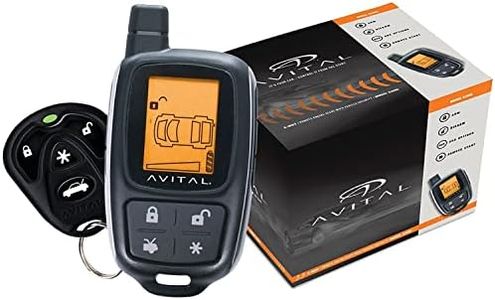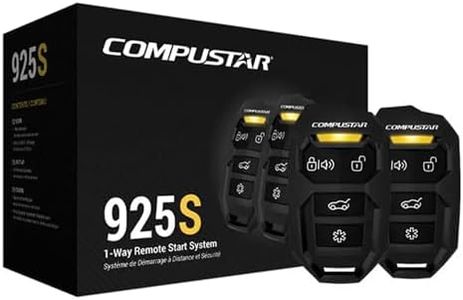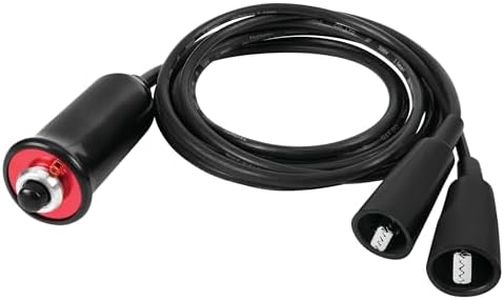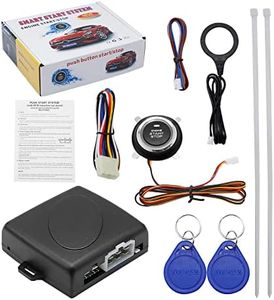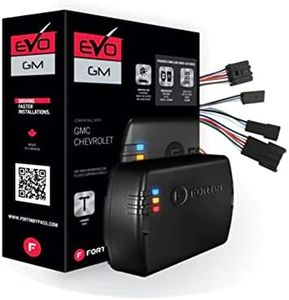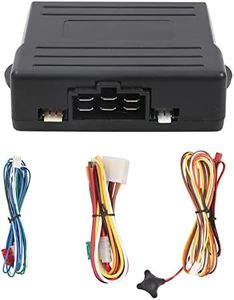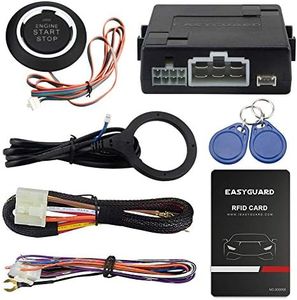We Use CookiesWe use cookies to enhance the security, performance,
functionality and for analytical and promotional activities. By continuing to browse this site you
are agreeing to our privacy policy
7 Best Remote Start Kits
From leading brands and best sellers available on the web.Buying Guide for the Best Remote Start Kits
Choosing the right remote start kit can add a lot of convenience to your daily routine, especially in extreme weather when you want your car to be warmed up or cooled down before you get inside. When selecting the best remote start kit, it's important to understand the main features and specifications that will affect compatibility with your vehicle and your personal needs. Focusing on these key aspects will help you make a smart, satisfying purchase.CompatibilityCompatibility refers to whether the remote start kit will work with your specific vehicle. This is very important, as kits are often made for certain makes, models, or years, and some cars need extra modules or wiring for successful installation. Compatibility details usually mention the vehicles or types of engines supported. Generally, older and simpler cars are easier to adapt, while newer vehicles with complex security or push-button start systems may require more advanced kits. Always check these details and, if unsure, look for user lists or contact the kit manufacturer. Ensuring a good match guarantees a smoother installation and better performance.
RangeRange is the distance from which you can start your vehicle using the remote. It's measured in feet or meters. Basic kits might offer a few hundred feet, while advanced ones can reach up to a mile or more. If you need to start your car from inside your home or office and the parking lot is nearby, a short range will be enough. But if your parking is far (like in big lots or garages), go for a longer range. Think about your usual parking habits and pick a kit that covers the farthest you might be from your car.
Installation ComplexityInstallation complexity indicates how easy or difficult it is to fit the kit into your vehicle. Simpler kits are more straightforward and can be installed with basic wiring knowledge, while more advanced kits may require professional installation, especially if your car has an advanced security system or push-to-start. Look for kits labeled as 'plug and play' if you want something easier, but if your car has special features, expect extra steps. Choose according to your technical confidence and willingness to do it yourself.
Keyless Entry IntegrationKeyless entry integration describes whether your remote start kit can also lock or unlock your doors. Some kits only start the engine, while others combine this function with keyless entry so you can control both with one remote. If you already have keyless entry and don't want extra remotes, look for integration features; if you are fine carrying a separate remote or your car does not support this, a simple starter will do. Think about convenience and your car's existing system.
Security FeaturesSecurity features include things like anti-theft, engine shutdown, or alarm integration. These protect your vehicle from unauthorized use when remote starting. Basic kits may simply start the engine, while advanced kits make sure the car can't be driven without the key or integrate with your car's alarm. If security is important to you or you park in high-risk areas, choose kits with strong security features. If you live in a safe area and prioritize simplicity, this may be less critical.
Smartphone CompatibilitySmartphone compatibility lets you use your phone as a remote via an app, rather than relying on a physical key fob. This adds convenience and sometimes extra features like GPS tracking or status alerts. Basic kits use only key fobs, while smart-enabled kits connect through Bluetooth or the internet. If you like controlling everything from your phone and want more information about your car, choose a smart-compatible kit. If you prefer a simple remote or don't want to deal with apps, traditional kits are better.
